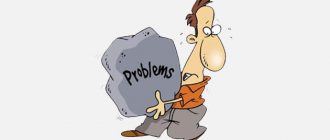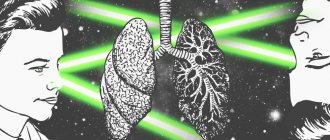Impulsivity is a character trait that is revealed in the tendency to react to a circumstance, condition, situation or mental disturbances hastily and recklessly under the influence of emotions or external events. Simply put, this is a tendency to perform uncontrollable actions generated by excessive emotional experience or due to external circumstances. In this case, an error in the analytical conclusion occurs. The individual does not evaluate the consequences of his own actions, which is why he often subsequently repents of what he has done. Impulsive personalities are characterized by emotional incontinence, irritability, and impatience. They often show irresponsibility, frivolity, and touchiness.
Types of impulsivity
Impulsivity is a mental disorder in adults. It is divided into the following types:
- children's;
- teenage;
- adult.
Children are not inclined to think about their actions and analyze their consequences. That's why they are children, just to live. And their parents make decisions for them. Therefore, among the youngest inhabitants of the earth, impulsive behavior is a regular occurrence. And psychologists consider it as the norm.
Adolescent impulsivity can be triggered by attempts to draw attention to one's actions. We should not forget that the younger generation perceives many things in a heightened form. Their life during puberty is full of stress. Stress, overwork, overexcitation of the nervous system, stubbornness and attempts to show independence give rise to impulsive behavior.
Rehabilitation
Obsessive-compulsive disorder is characterized by irregular changes, so, regardless of the type of treatment, any patient can experience improvement over time.
After supportive conversations that instill self-confidence and hope for recovery, and psychotherapy, where techniques for protecting against obsessive thoughts and fears are developed, the patient feels much better.
After the recovery stage, social rehabilitation begins, which includes certain programs for teaching the abilities necessary for a comfortable sense of self in society.
Such programs include:
- developing communication skills with other people;
- training in the rules of communication in the professional sphere;
- developing an understanding of the characteristics of everyday communication;
- development of correct behavior in everyday situations.
The rehabilitation process is aimed at building mental stability and building personal boundaries for the patient, gaining faith in his own strength.
Impulsive adult
In psychology, the definition of impulsivity is making decisions thoughtlessly, under the influence of feelings and emotions. And for an adult, such behavior, if it occurs too often, is a deviation from the norm.
When a person commits impulsive actions, this is clear evidence that he is not always able to control his behavior. And it's quite dangerous. Such an individual seems harmless, and his antics seem bad. But you never know, under the influence of particularly strong emotions, he can cause trouble! In case of severe fear or rage, grab a knife, for example. If there is such a person among your loved ones, friends or colleagues, it is advisable to be able to correct his behavior. When we are talking about family members or friends, this is easier to do than in a situation with strangers, for example.
Complications
Not all patients manage to recover from obsessive-compulsive disorder and undergo full rehabilitation.
Experience has shown that patients with the disease who are in the recovery stage are prone to relapse (resumption and exacerbation of the disease), therefore, only as a result of successful therapy and independent work on oneself is it possible to get rid of the symptoms of the disorder for a long time.
The most likely complications of obsessive-compulsive disorder include:
- depression;
- increased anxiety;
- the appearance of suicidal tendencies;
- substance use;
- eating disorder;
- inability to communicate with people;
- increased aggression, inability to control oneself;
- isolation and social isolation.
How to recognize an impulsive person?
At first glance, impulsive behavior is difficult to recognize. But that's just how it seems. What is important to know about an impulsive person:
- This type of person is very emotional.
- Impulsive people are truthful. After all, it is very difficult to lie under the influence of emotions. There is no time to come up with false information when you are itching to say something.
- They, as a rule, are not the first to go into conflict. True, in exceptional cases this also happens, but for this you need to bring a person to “white heat”.
- It is difficult for them to maintain a conversation on one topic. These are people who like to jump from topic to topic, they quickly lose the thread of the conversation.
- They have a pronounced love for animals, most often. These people are compassionate, feed homeless cats, donate money to shelters for our little brothers. Such a person can bring home a stray kitten, although he already has three cats, two dogs and fifteen aquarium fish in his apartment.
The main features of such an individual are increased emotionality and activity. It explodes very easily, but also cools quickly.
Signs
The severity of impulsivity is determined by the specific functioning of the brain. As a rule, it is genetically determined. Excessive impulsiveness is often considered a negative trait. However, in some situations, the ability to make instant decisions is considered a feature of creative thinking.
Impulsivity of behavior is represented by four main signs. First of all, the phenomenon under consideration is determined by the inability to predict and plan. People perform actions while controlled by emotions, so they cannot foresee the expected consequences. For them, any outcome is a surprise. They prefer to achieve an insignificant, but rapid result, rather than spend a little more time in order to wait for a more significant result.
A weak level of control is also characteristic of impulsive individuals. They are subject to their own momentary desires.
Such persons are looking only for brightly acute emotions. Therefore, they are characterized by insufficient persistence, expressed in postponing uninteresting things, in procrastination.
Impulsive individuals invariably “scour” in search of fresh impressions; they are subordinated to the need to urgently receive a portion of new emotions. Thus, people tend to act as a result of the influence of intense positive or negative experiences that distort the ability to make thoughtful decisions and multi-choice moves. Thus, they lose the opportunity to avoid endless remorse and pangs of conscience, characteristic of impulsive individuals.
In addition, the described category of people is characterized by endless haste. They “rush” at crazy speed through the milestones of life, they are impetuous, and it is extremely difficult for them to force themselves to sit in one place for a long time. At the same time, they themselves do not know what reaction they will give to the next external impulse.
Motivated impulsivity
Impulsivity is making decisions under the influence of one's own desires, emotions and mood. However, there are two more types of impulsive behavior: motivated and unmotivated.
Now let's talk about the first one. Motivated impulsivity manifests itself under the influence of stressful situations. In such a state, even the most reasonable and thoughtful person has to act, sometimes, impulsively. And this is a normal reaction of the body. There is nothing wrong with such impulsiveness.
Varieties
Sometimes the level of impulsiveness in a person, under certain external circumstances, “goes off scale.” And this results in the formation of the following deviations from established norms in society:
- The desire to steal. The man saw some trifle thing on an open tray. The saleswoman turned away. And the individual’s “hands itched,” his mind turned off. He didn’t even understand how he grabbed the thing, put it in his pocket and slowly walked away. Why did you do this? This is evidence that the desire to steal, which we also call kleptomania, has awakened.
- A problem that is associated with the fact that it is difficult for a person to pass by gambling establishments. Now they are being closed en masse, but people manage to find illegal ways. This is gambling addiction - a craving for gambling.
- Did you play firemen as a child? Have you made fires from brooms at home in order to put them out? This behavior is normal for children, but not normal for society. Now imagine that an adult lights fires at home. Or not at home, but under a neighbor’s door, visiting friends, or in the bathroom at work. This is impossible, someone will say, but there is an explanation for this too. This behavior is called pyromania.
- There is also such an option as food impulsiveness. This is when the house is full of food, and a person is inspired to eat a pie. And he will go to the store, despite the fact that there is almost no money in his wallet, that it is raining or dark outside the window. And he will buy himself this pie. By the time he gets home with him, he won’t want to eat anymore.
Impulsivity is a painful condition, as can be seen from the sub-points listed above.
Main reasons
Despite a large number of studies, it is impossible to unambiguously determine the main cause of obsessive-compulsive disorder. This process can arise due to psychological, sociological, and biological reasons, which can be classified in tabular form:
| Biological causes of the disease | Psychological and social causes of the disease |
| Diseases and functional-anatomical features of the brain | Disorders of the human psyche due to the occurrence of neuroses |
| Features of the functioning of the autonomic nervous system | Increased susceptibility to certain psychogenic influences due to the strengthening of certain character or personality traits |
| Metabolic disorders, most often accompanied by changes in the levels of the hormones serotonin and dopamine | Negative influence of the family on the formation of a healthy psyche of the child (overprotection, physical and emotional violence, manipulation) |
| Genetic factors | The problem is the perception of sexuality and the emergence of sexual deviations (deviations) |
| Complications after infectious diseases | Production factors most often associated with long work, accompanied by nervous overload |
Are there positive sides to being impulsive?
It would seem a strange question. What good can come from mental disorders? However, positive aspects can be found everywhere. And even in such an unpleasant thing as impulsivity syndrome:
- Ability to make decisions quickly. An impulsive person will become indispensable when circumstances require a quick response to a certain situation. And you have to adapt to it, because there is absolutely no time to think about it.
- Developed intuition. Oddly enough, people who tend to make decisions under the influence of emotions have this quality quite well developed. And it helps them on their life's journey.
- Openness. Impulsive people are very emotional and open. In this regard, it is easier to communicate with them. For when you can understand a person’s emotional state, it is easier to find a common language with him. And you can even help in extinguishing this or that surge. For which the impulsive comrade will be very grateful. They themselves suffer from their antics.
- Truthfulness. As a rule, impulsive people do not know how to lie. Emotions boil and seethe inside them. And under their influence, such types lay out everything they think. Whether it’s good or bad, they don’t think about it. They just say everything honestly.
What it is
The phenomenon under consideration is a person’s inability to cope with momentary impulses, the tendency to take actions without analyzing the consequences, under the influence of the current situation and personal emotions. Emotional impulsivity is accompanied by inattention, excitability, and hyperactivity. Individuals with this feature perform actions guided by the first impulse, and also quickly feel pangs of conscience if their thoughtless activity gives rise to a negative result. For example, a frivolous, expensive purchase of a useless but attractive thing, leading to remorse due to unnecessary spending of money.
The opposite feature is considered to be self-control, which consists in the desire to inhibit simple desires, weigh the results of actions, not ignore the judgments of the environment, and take into account not only personal interests. This is the main difference between impulsiveness and decisiveness, which are similar to a purposeful reaction, but the latter presupposes comprehension of actions, analysis of possible outcomes, and a conscious preference for certain behavior. A decisive individual acts confidently, based on premeditated conclusions and a firm decision. An impulsive person acts spontaneously, without thinking through his own actions in advance.
Often, a person’s impulsiveness is compared to a quick temper, because this reaction is also characterized by uncontrollability, impetuosity, and thoughtlessness. The difference between the above qualities is that unrestrained, hot-tempered individuals are emotionally harsh, often openly expressing irritability, anger, and anger. However, no action may follow such behavior if such individuals are not impulsive. Another difference is the association of short temper with negative emotions, while impulsiveness can also be recharged with joy, happiness, and uplift.
Negative points
Alas, the most striking drawback of impulsiveness is the constant change of mood. You don’t know what to expect from a person with such a trait. Either one thing comes to his mind, then he’s already thinking about something else.
We all want consistency and comfort around us. And when such a person is found nearby, it is very difficult to deal with her. What is the comfort here? You live like on a powder keg.
It can be treated
But the diagnosis described above is curable. If such behavior was noticed in childhood, then it is the parents’ fault. It’s one thing when impulsiveness manifests itself in a child often, but irregularly. But it’s different when all children’s behavior is built on actions of this kind. This is a deviation from the norm. And if measures are not taken in a timely manner, then it will be too late, as they say, to wave one’s fists.
In adulthood, such a trait as impulsiveness can be removed by an experienced specialist. She is treated with psychotherapy. You can study individually, or you can attend group classes.
In some, particularly difficult cases, antidepressants and antipsychotics are prescribed to treat this behavior. The course is conducted under the strict supervision of a psychotherapist. He also prescribes medications.
You can’t self-medicate, but you also can’t leave things to chance.
Diagnostic methods
A mental disorder can be diagnosed using several tools and methods for identifying the disease.
In obsessive compulsive disorder you will find the difference
When designating research methods for impulsive (obsessive) compulsive syndrome, diagnostic criteria for deviation are first identified:
1. Repeated occurrence of obsessive thoughts in the patient, accompanied by the manifestation of compulsions within two weeks.
2. The patient’s thoughts and actions have special characteristics:
- they, in the patient’s opinion, are considered his own thoughts not imposed by external circumstances;
- they are repeated for a long time and cause negative emotions in the patient;
- a person tries to resist obsessive thoughts and actions.
3. Patients feel that emerging obsessions and compulsions limit their lives and interfere with productivity.
4. The formation of the disorder is not associated with diseases such as schizophrenia or personality disorders.
A screening questionnaire for obsessive disorders is often used to identify the disease. It consists of questions that the patient can answer positively or negatively. As a result of passing the test, an individual’s tendency to obsessive disorder is revealed by the predominance of positive answers over negative ones.
Equally important for diagnosing the disease are the consequences of the symptoms of the disorder:
- high degree of anxiety and suffering of the patient;
- feeling of restriction of freedom, waste of energy resources to suppress anxiety;
- negative impact of the condition on the professional sphere of life;
- the patient’s problems in relationships with people, isolation from society;
- social behavior disorders.
Among the methods for diagnosing obsessive-compulsive disorder, analysis of the patient’s body using computed tomography and positron emission tomography is of great importance. As a result of the examination, the patient may exhibit signs of internal brain atrophy (death of brain cells and its neural connections) and increased cerebral blood supply.
Disease detection
We discussed above how to recognize an impulsive person in your environment. Now let’s find out how to identify the disease in a particular individual. We can talk about deviation in the following cases:
- Impulsive actions are performed regularly. Even their negative consequences do not stop a person. He accomplishes another “feat.”
- A person is simply not able to independently control behavior.
- The individual experiences a urge to commit an ill-considered act.
- After the impulsive act is successful, the person feels satisfaction from what he has done. He does not repent of his action, but enjoys it.
- Sometimes impulsivity may be accompanied by attention disorder and motor disinhibition.
Drug treatment: drug lists
Impulsive (obsessive) compulsive disorder often requires medical treatment through the use of certain medications. Carrying out therapy requires a strictly individual approach, which takes into account the patient’s symptoms, his age and the presence of other diseases.
The following medications are used only as prescribed by a doctor and taking into account special factors:
- features of the manifestation of the disorder;
- age, gender of the patient;
- the presence of other diseases in the patient.
| antidepressants | fevarin, Zoloft, clomipramine, amitriptyline |
| anxiolytics | phenazepam, clonazepam |
| neuroleptics | etaperazine, haloperidol |
| mood stabilizers | carbamazepine, depakine |
| nootropics | phenibut, pantogam |









